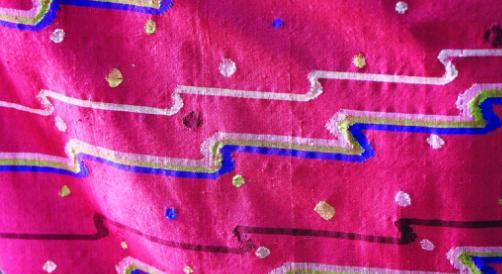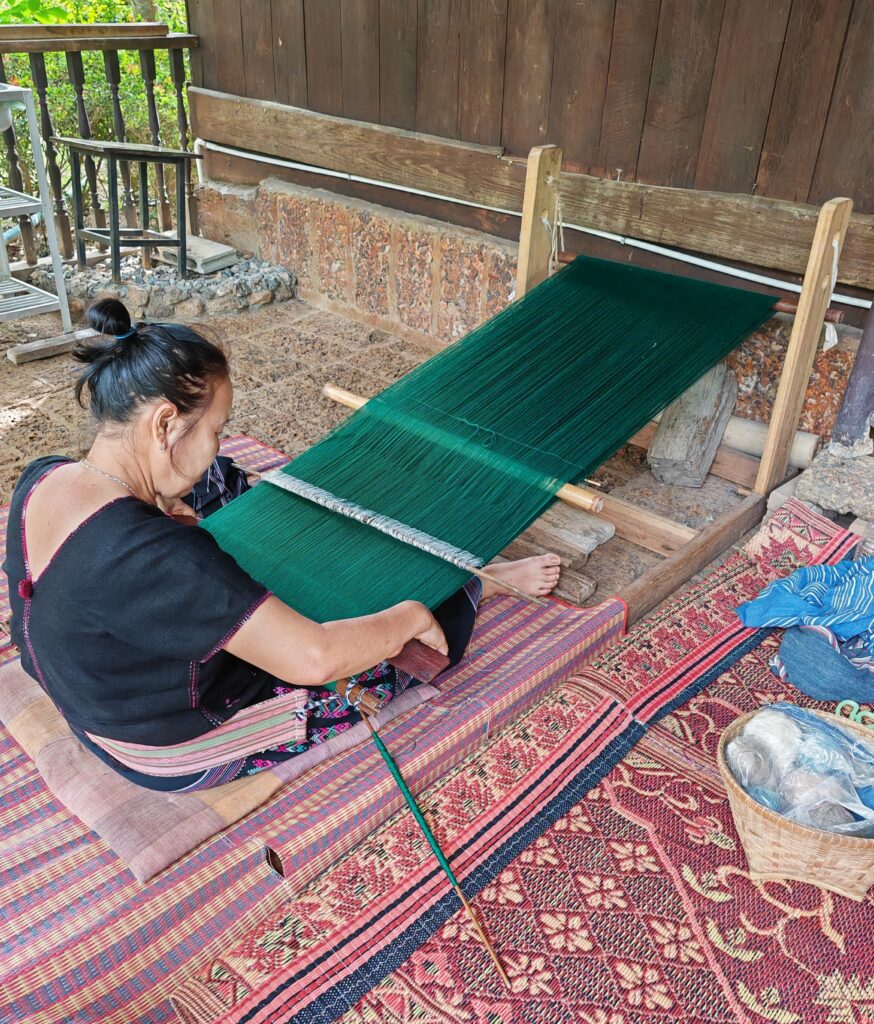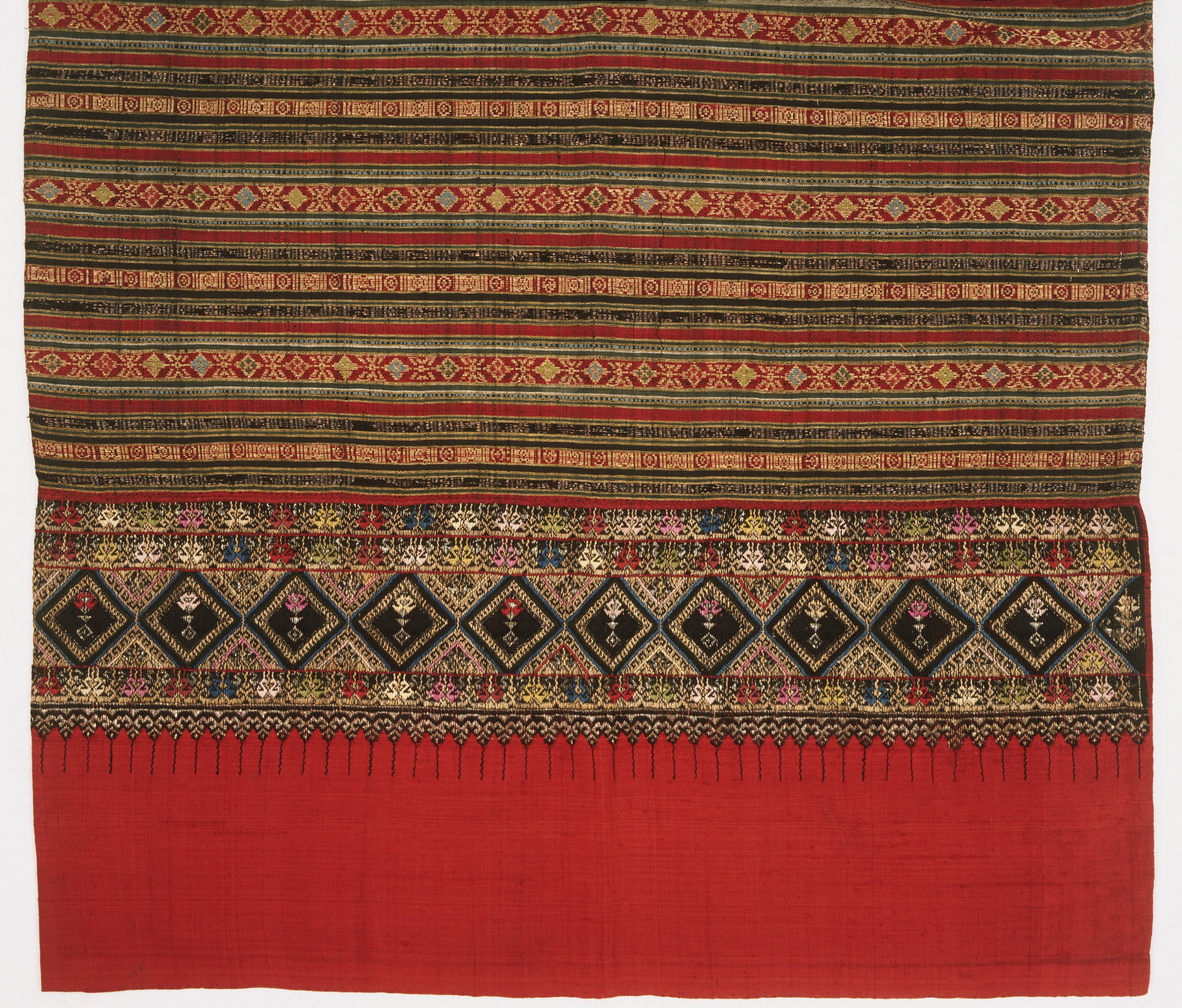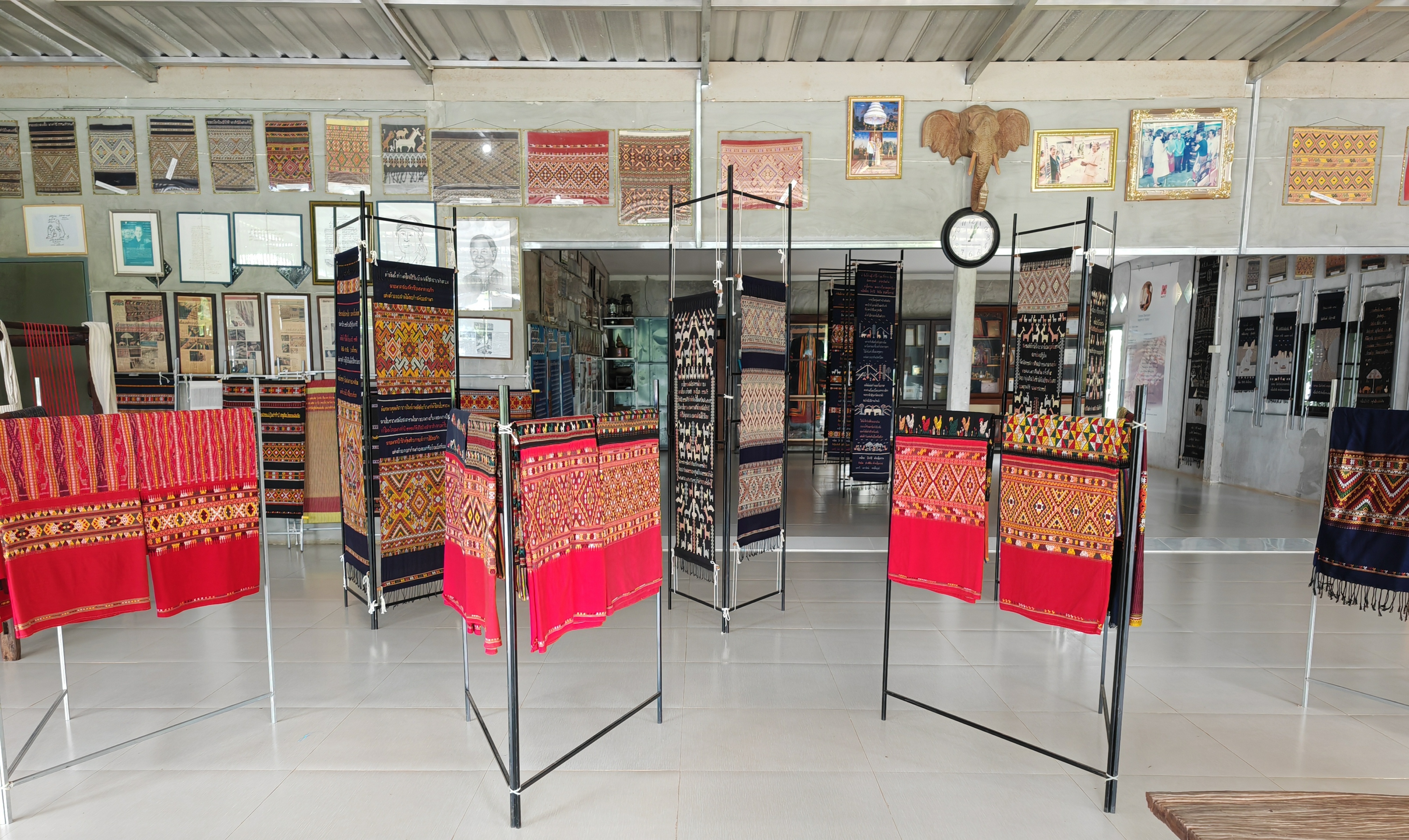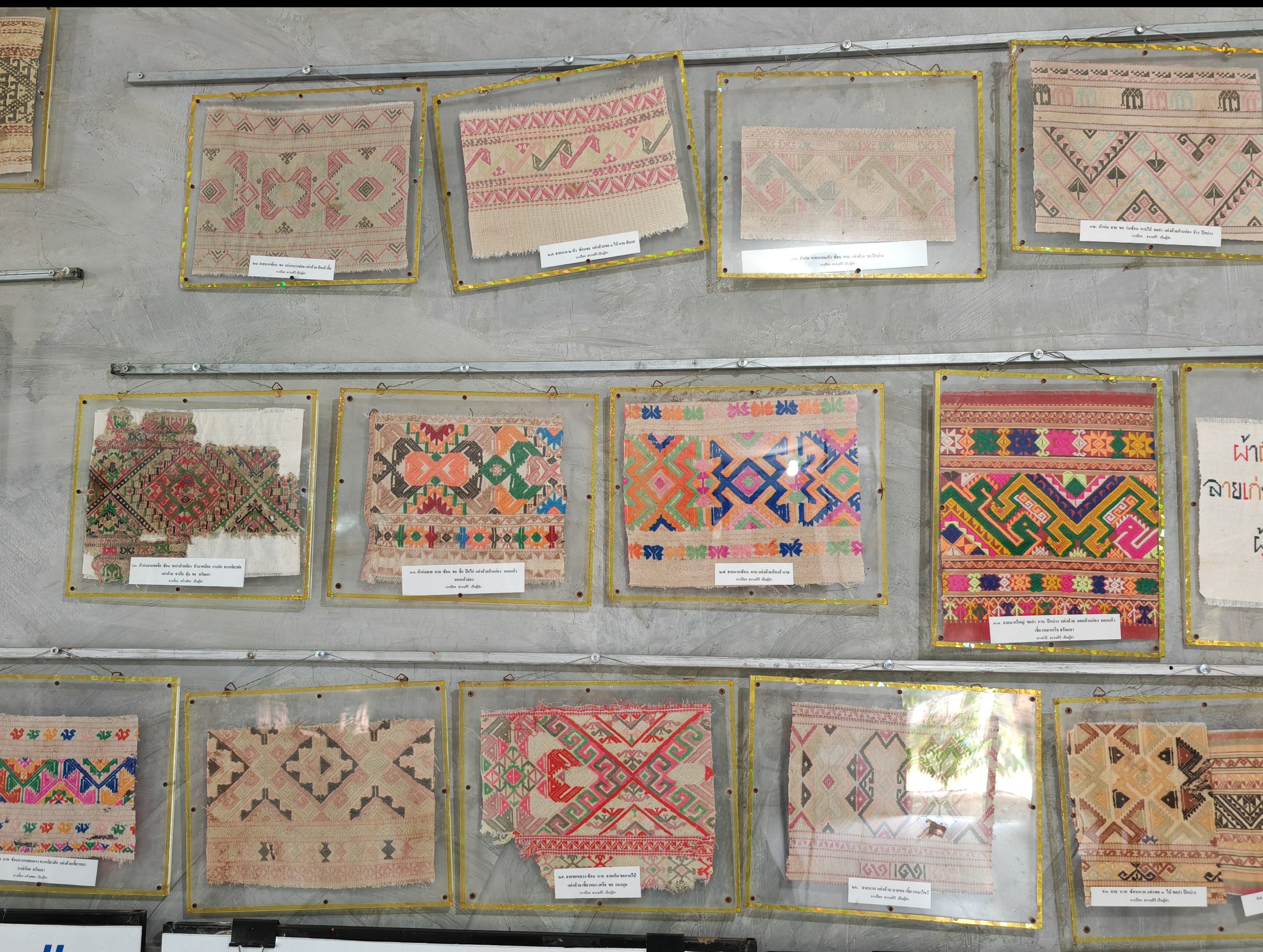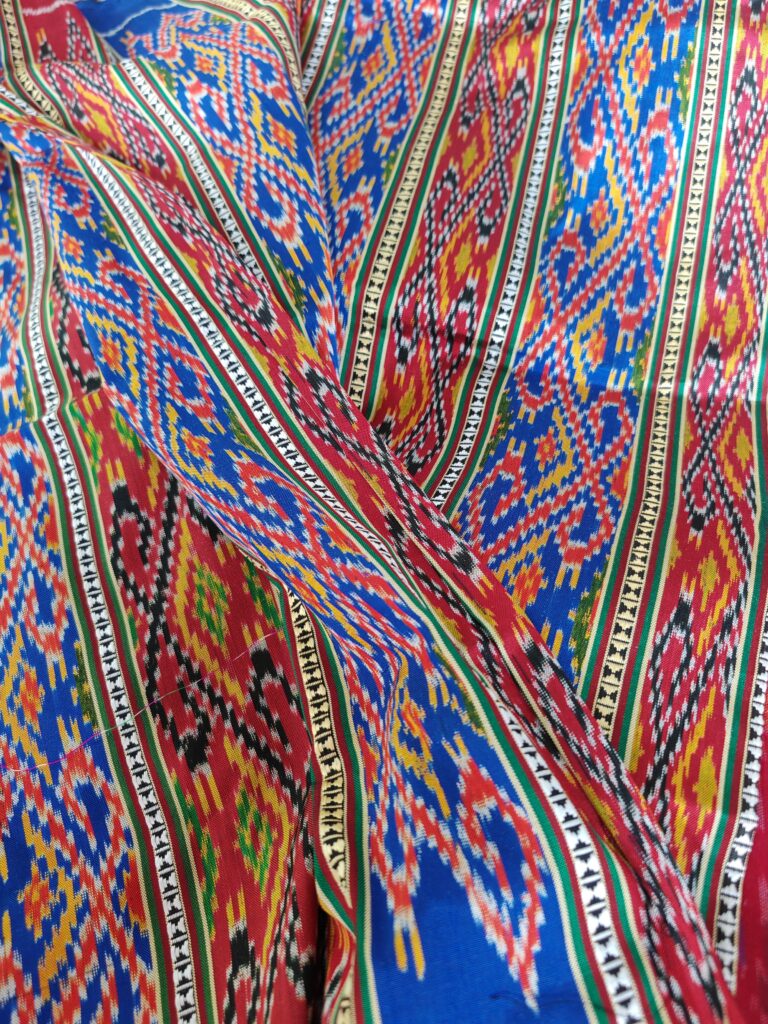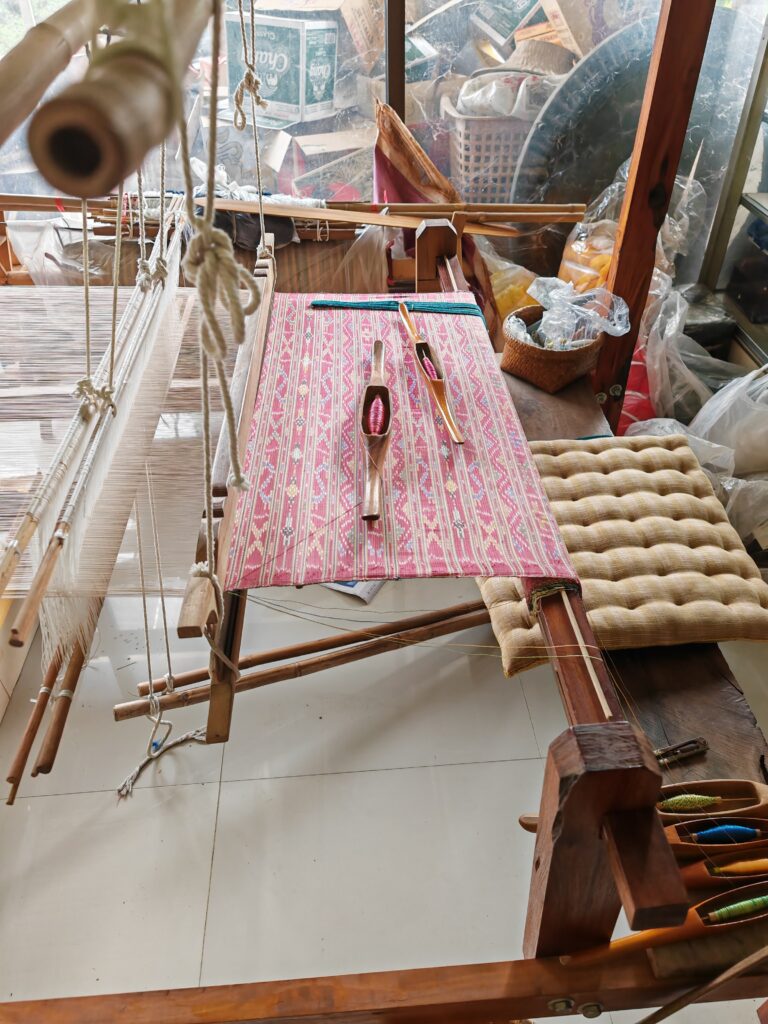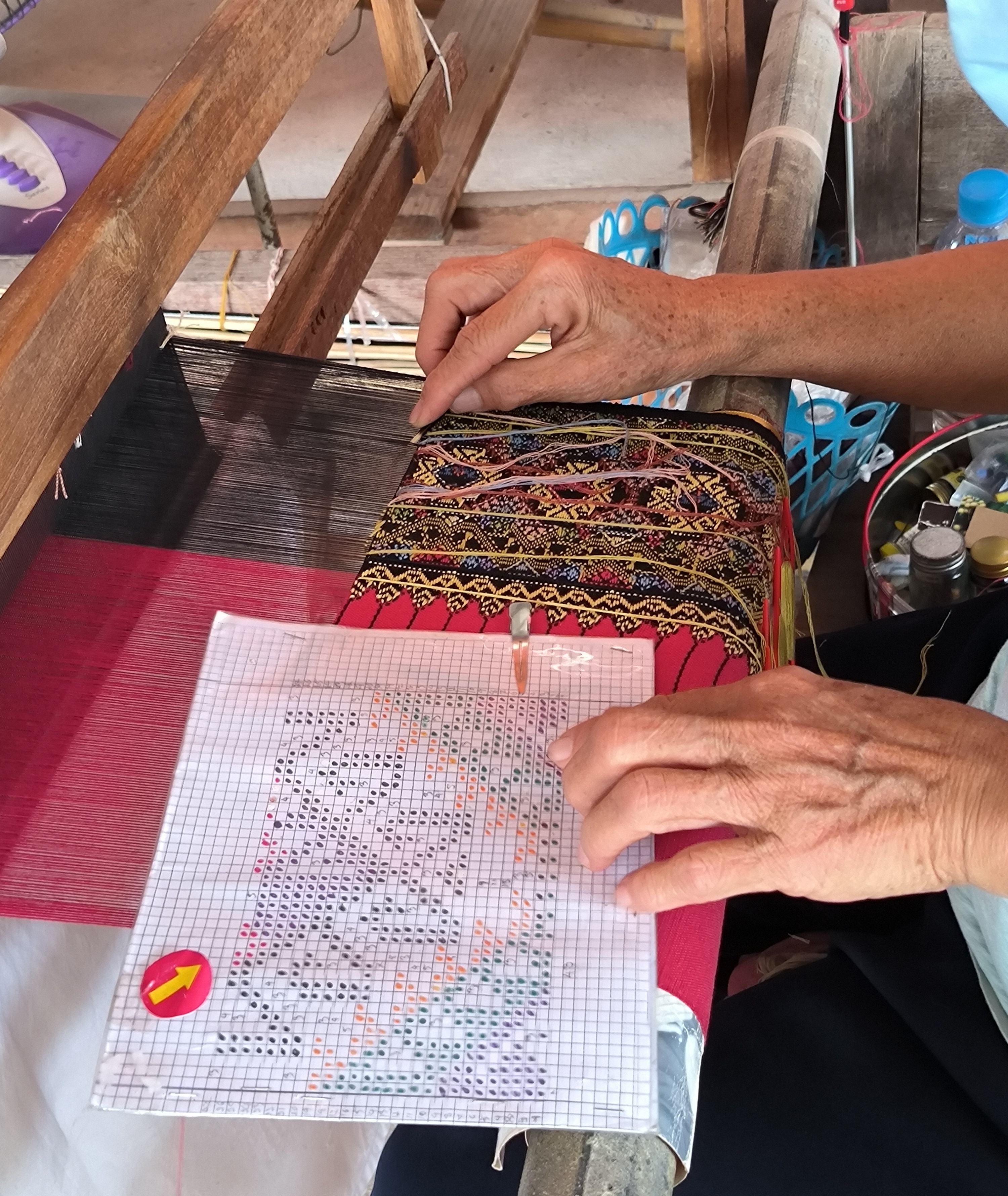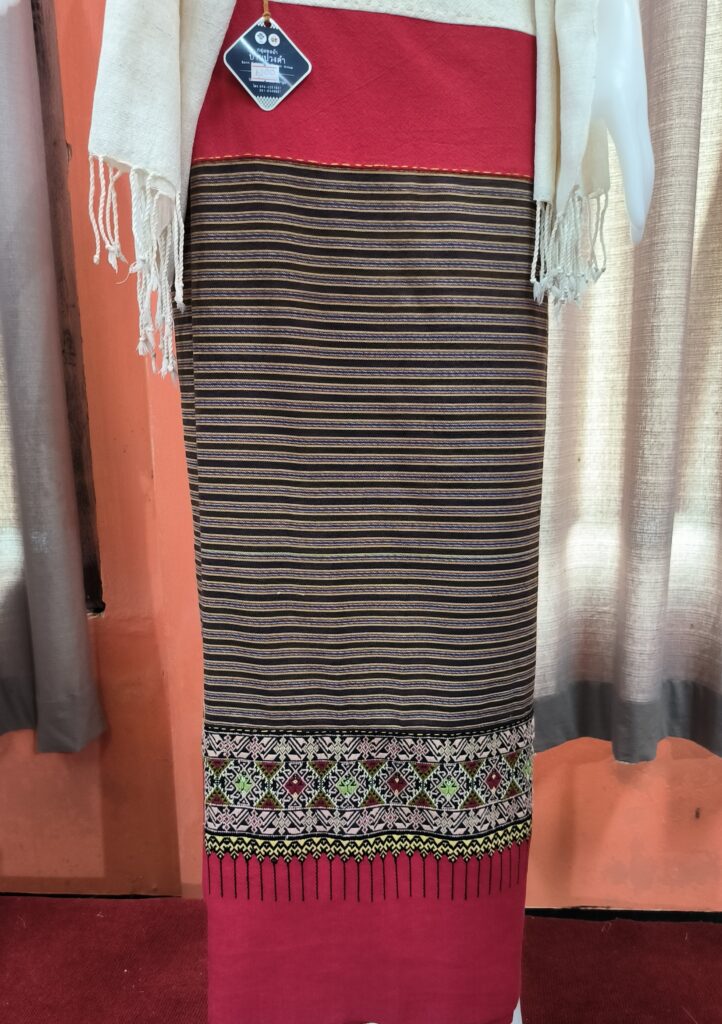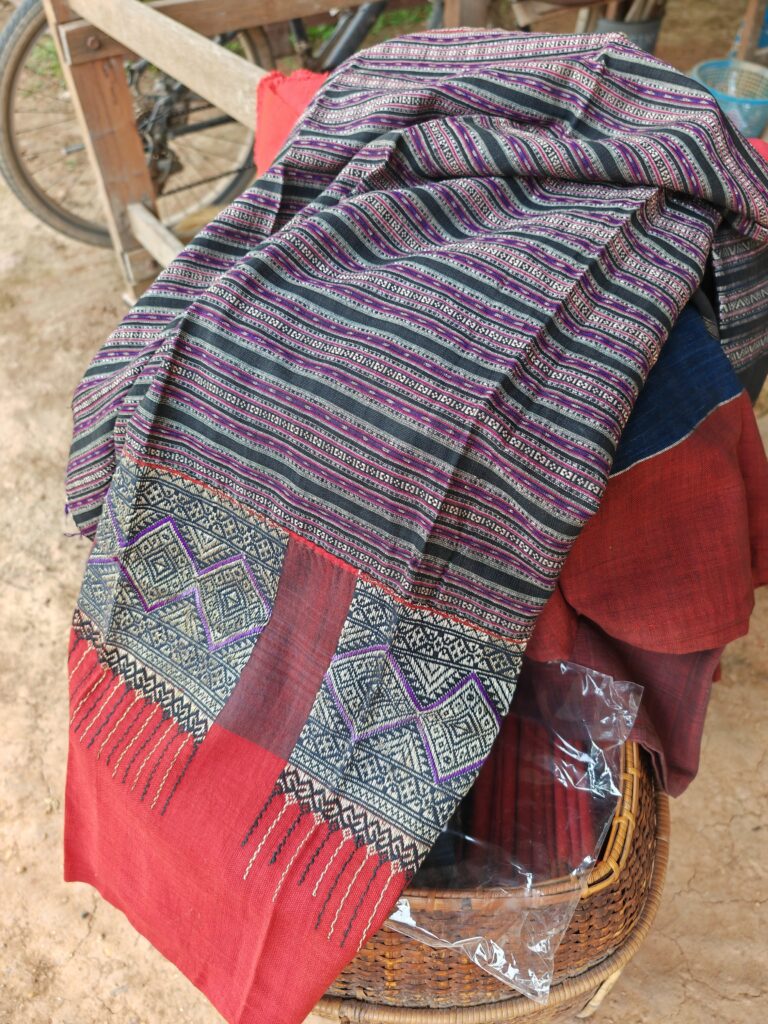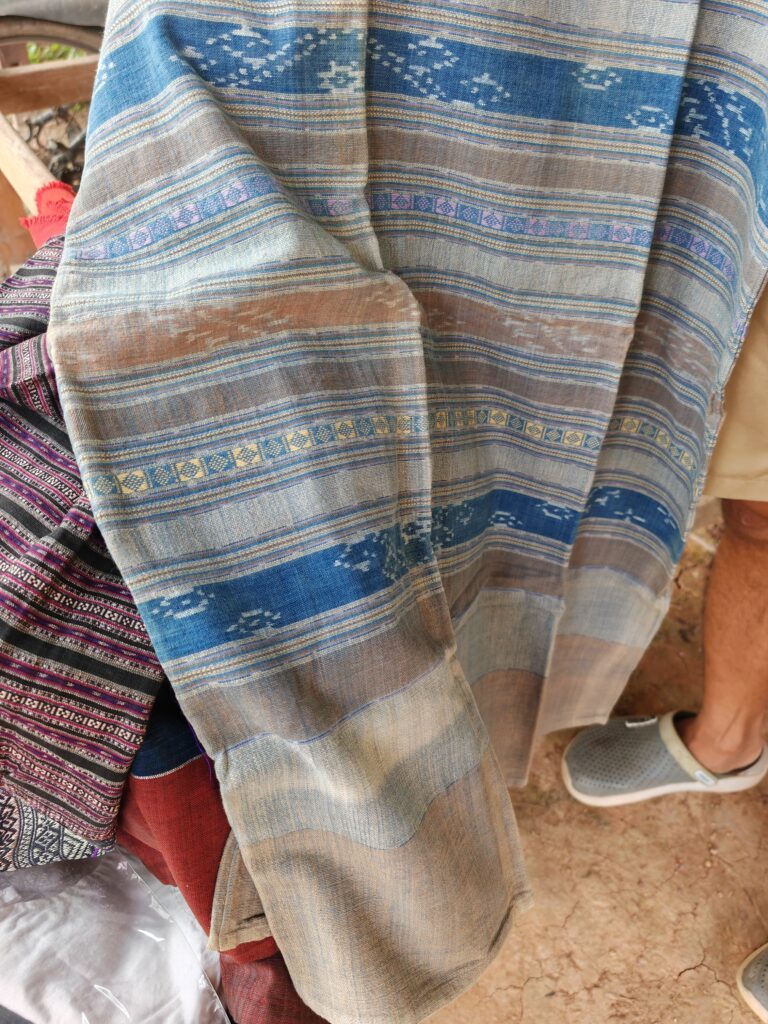This is the second in a series of three posts. The focus here is on the Textile Heritage of Northern Thailand. Unless otherwise indicated, all photos are ©Michael Harrigan.
Thailand’s northern provinces offer visitors some of the most spectacular scenery in the country. This mountainous region is covered with forest and jungle and is home to many of the ethnic minorities that create a variety of intricately handwoven cotton textiles. The Karen, Hmong, Akha, Black Lahu, Tai Lue and Lua – among others – call this area home. A particularly distinctive style, pha lai nam lai (flowing water design), is a unique feature of cotton textiles produced in Nan province, for example.
On a recent road trip to the North we visited the Ban Huai Tom handicraft center in Lamphun province, where Karen ethnic minority artisans produce cotton textiles and silver jewelry. Many of the dyes used are natural, from local plants, barks and roots. Weaving is done on backstrap looms; and silver items are made following traditions such as basket-weaving. This was an interesting center to visit: lovely people, happy to demonstrate their crafts and to show the products for sale. We left with a few silver pendants!
In 2019 due to the COVID-19 pandemic in Thailand, lockdown measures were implemented meaning that public venues and businesses had to close. This included the weaving centers throughout the country, with handweaving activity retreating to individual homes. In many cases centers in weaving villages have not re-opened, leaving only small retail operations in place. There is usually someone around, however to answer questions about dyeing and weaving techniques and to take enthusiasts to the home of a local artisan to see work in progress.
Silk fabric for use in clothing the well-to-do and royalty is created in the North. Expert weavers produce textiles for sarongs such as pha sin – including sin ta mai, sin tin chok mai, sin mai ngoen and mai kham (incorporating silver and golden yarns) – and golden brocade.
In Uthai Thani province (in the near north) the Lao Krang ethnic minority is credited with the production of the pah thai krang textile – which is characterized by its vivid red color, extracted from the krang insect. Their tradition involves creating masterful designs with single-colored threads against the red background color. Kru Jampee Thammasiri, a Master Artisan of Thailand, passionately preserves this tradition. She teaches at a local institute and is willing to take on an apprentice who is committed to dedicating the time required to master this craft – as we learned during a recent visit.
Also in the near north we stopped at a market close to the King Naruesuan the Great monument in Petchabun province, where I found some handwoven silk that I couldn’t leave behind. This was a traditional Lao mud mee technique on silk, and it was pricey but it couldn’t be helped!
Later that same day we stopped to meet a master artisan in Ban Rai, Uthai Thani province. Kru Nitat Jantorn is a weaver in the Lao mud mee tradition, and a master in the process from harvesting silk cocoons through spinning, dyeing, and weaving the final product. His textiles – naturally dyed silks – are officially inspected and awarded Thailand’s Golden Peacock distinction if they meet the standards set and all steps in the process use Thai materials and employ traditional techniques. He is another gifted weaver willing to teach motivated novices and indicated the time required from learning the basics to completing a complex piece would be full-day practice for two and a half to three months.
Pha chok is a unique cultural heritage of Chiang Mai and Lamphun provinces. It involves an intricate weaving process demanding a high level of skill: a ‘brocade’ is created by lifting and lowering individual threads or groups of threads to yield a raised pattern. Gold and silver threads are often used, creating a textile for only the most special occasions – such as weddings and royal ceremonies.
Our final textile stop on this road trip to northern Thailand was a late afternoon visit to another master weaver. Kru Gai (Teacher Chicken) has his workshop in Nan province and also teaches at the nearby Muang Thet center in Nan city’s main temple complex. There was no spinning, dyeing or weaving in process that day as work in the fields was taking precedence, but he brought out some of his work to show us (there was nothing for sale, unfortunately). Kru Gai regularly incorporates both silk and cotton fibers in his weaving. Here was yet another possibility to learn from a master – requiring a three-to-five day per week commitment for approximately two months.
Next up: Focus on the Textile Heritage of Northeastern Thailand
Sources
Loha-unchit, Kasma, “A Treasure of Northeastern Thailand: Weaving Villages”, 30 May 2009, https://www.thaifoodandtravel.com/blog/posts/ne-thailand-weaving-villages.html
Thailand Foundation, “Mat Mii’, (created with special help from the Queen Sirikit Museum of Textiles), https://www.thailandfoundation.or.th/culture_heritage/mat-mii/
The Nation, “A Trip to Thailand’s Silk Route”, 29 Dec 2019, https://www.nationthailand.com/thai-destination/30379968
The Support Arts and Crafts International Centre of Thailand, “Types of Thai Handicrafts: Painted Silk Ikat (Pha Mai Taem Mii)”, https://cms.sacit.or.th/cms/uploads/categories/5b3b3e573becfa5d7fac4916f8bc0fed/_86e53d5629200f55a3332ca9a8a18a48.pdf
Tourism Product Department, Tourism Authority of Thailand, “Pass on the Story: Textile Treasures of Northern Thailand”, https://www.tourismthailand.org/tourismproduct

